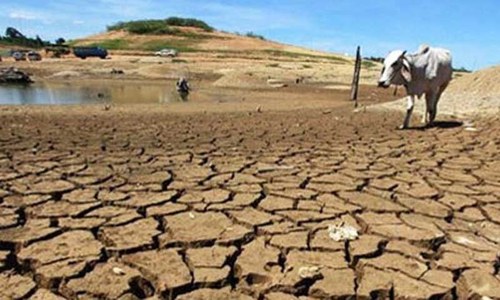WASHINGTON: Nearly a quarter of the world’s population lives in 17 countries facing extremely high water stress, close to “day zero” conditions when the taps run dry, according to a report released on Tuesday.
The Aqueduct Water Risk Atlas of World Resources Institute (WRI) ranked water stress, drought risk and riverine flood risk using a peer-reviewed methodology.
“Agriculture, industry, and municipalities are drinking up 80 per cent of available surface and groundwater in an average year” in the 17 worst affected countries, the WRI said.
“When demand rivals supply, even small dry shocks — which are set to increase due to climate change — can produce dire consequences” such as the recent crises in Cape Town, Sao Paulo and Chennai.
Qatar, Israel, Lebanon, Iran, Jordan, Libya, Kuwait, Saudi Arabia, Eritrea, the UAE, San Marino, Bahrain, India, Pakistan, Turkmenistan, Oman and Botswana made up the top 17.
“Water stress is the biggest crisis no one is talking about. Its consequences are in plain sight in the form of food insecurity, conflict and migration, and financial instability,” said WRI CEO Andrew Steer.
Another 27 countries comprised the “high baseline water stress” list and a full list can be found here: https://www.wri.org/our-work/project/aqueduct/
The Middle East and North Africa are home to 12 of the most stressed countries, while India, which is ranked 13, has more than three times the population of the other 16 in its category combined.
“The recent water crisis in Chennai gained global attention, but various areas in India are experiencing chronic water stress as well,” said Shashi Shekhar, India’s former water secretary, adding that the tool could help authorities identify and prioritise risks.
Even countries with low average water stress can have dire hotspots, the report found. While the US ranks a comfortable 71 on the list, the state of New Mexico faces water stress on par with the UAE.
Published in Dawn, August 7th, 2019














































